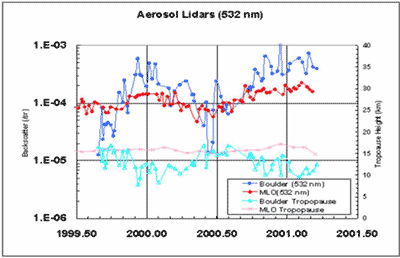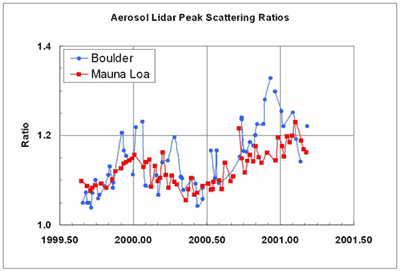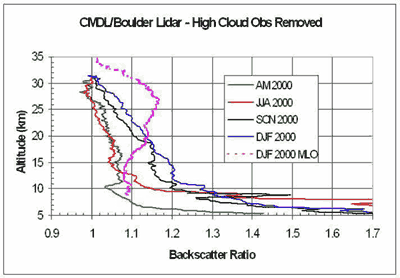More than two years after road access and electrical power to the Mauna Loa Observatory was cut off by lava flows, NOAA staff continue to make critical measurements of the atmosphere and other environmental variables at the remote site.
In 2023, observatory staff installed solar panels at the site and resumed some measurements, including the independent carbon dioxide monitoring programs run by the Global Monitoring Laboratory and Scripps Institution of Oceanography, as well as other atmospheric measurements.
Construction of a temporary road to access the observatory site is anticipated to begin in summer 2025.
Media can contact: Theo Stein (303) 819-7409 (theo.stein@noaa.gov)
Introduction
A lidar operating at 532 nm wavelength was designed and constructed for stratospheric aerosol measurements at CMDL in Boulder, CO and first observed the stratospheric layer in August, 1999. Components of the lidar were tested at Mauna Loa Observatory (MLO) and compared to the MLO lidar (view comparison). The Boulder lidar uses many of the same components as the MLO lidar, the main difference being the much lower power laser used at Boulder.
Annual Cycle
The average Integrated Aerosol Backscatter (IABS, integrated above the tropopause) for the winter of 2000-2001 was 38% higher than the winter of 1999-2000. The IABS was significantly lower over MLO but the same increase of 38% was observed. The higher IABS over Boulder reflects the lower altitudes (higher densities) of the bulk of the aerosol compared to MLO. The small seasonal cycle in the MLO tropopause is seen to peak in winter, changing by only 1.5 km from the summer minimum. This is characteristic of the tropopause in tropical latitudes and is opposite the seasonal cycle at midlatitudes, which peak in summer....
2001 Asian Dust Episode
Springtime wind storms over high Chinese desert plateaus often load large amounts of particulates in the upper troposphere. The air is transported to the east picking up pollutants from industrialized areas and is advected out over the Pacific Ocean. The dust is regularly seen at Mauna Loa Observatory and in some years is seen over the continental U.S. The spring of 2001 saw unusually high amounts of Asian dust over much of the U.S. and the lidar recorded the vertical distribution of the dust on several nights. Seasonal averages are shown below for 2000 and 2001, followed by the individual profiles in March and April, 2001. The 2000 springtime average (AM 2000) is lower than any of the 2001profiles and may have been an unusually clear spring. March 2000 was not included in the average because the lidar was not recording the lower altitudes at that time. The profiles of 4/14, 4/15 and 4/24 show the dust reaching well up into the upper troposphere. The tropopause was between 11km and 13km for these profiles.
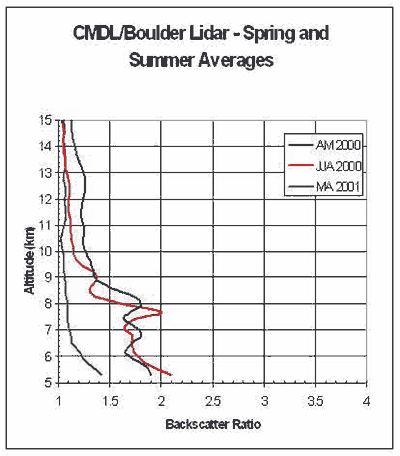
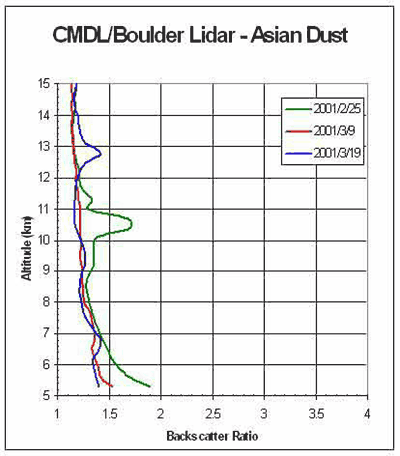
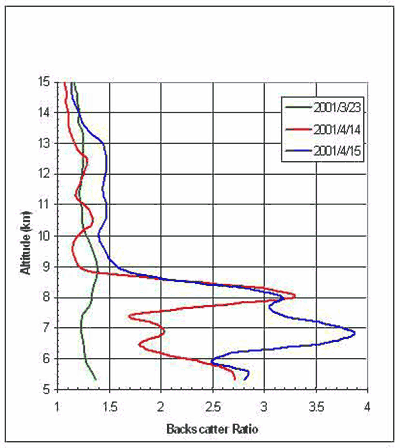
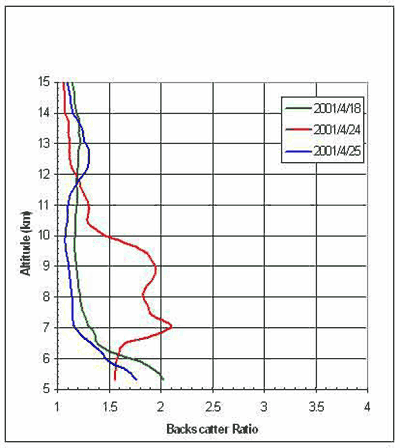
Addition of Channel 2
The first few months of measurements over Boulder indicated that the lower tropopause (compared to MLO) and
greater scattering in the upper troposphere complicated the interpretation of the lower part of the
stratospheric aerosol profile. It was determined that the dynamic range of the single detector channel could
not accurately profile the aerosol backscatter over the entire altitude range of interest. A second, low
altitude channel, for which the signal is attenuated, was added in April, 2000. This increased the altitude
range covered and decreased the error in the Integrated Aerosol Backscatter (IABS) from 8.3% to 5.9%. Signals
for the two channels are shown below. The signals are mainly from molecular scattering. Channel 2 is normally
spliced onto channel 1 at 14km.
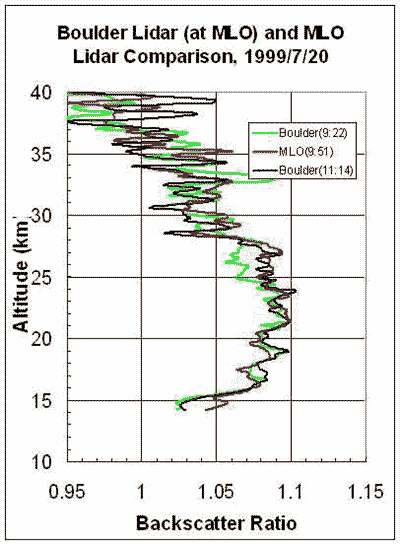
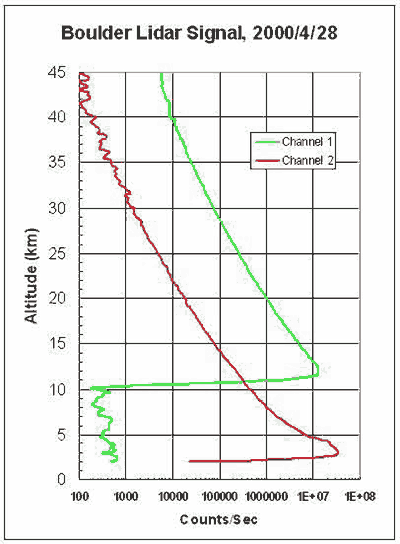
Lead Investigator(s):
Dr. John E. Barnes
808-933-6965 (x222)
Dave Hoffman
303-497-6966
Date Started:
August, 1999
Related Programs:
Mauna Loa (HI) Lidar
Samoa Lidar
Trinidad Head (CA) Lidar
Camera Lidar
General Lidar Info
Lidar Specifications
Station Alt: 1.695 km
Latitude: 33.99 N
Longitude: 105.26 W
Time Zone: GMT -6
Laser Type: Nd:YAG
Frequency: Weekly
Acq Board: MCS
# Channels: 2
(nm) used: 532, 1064

